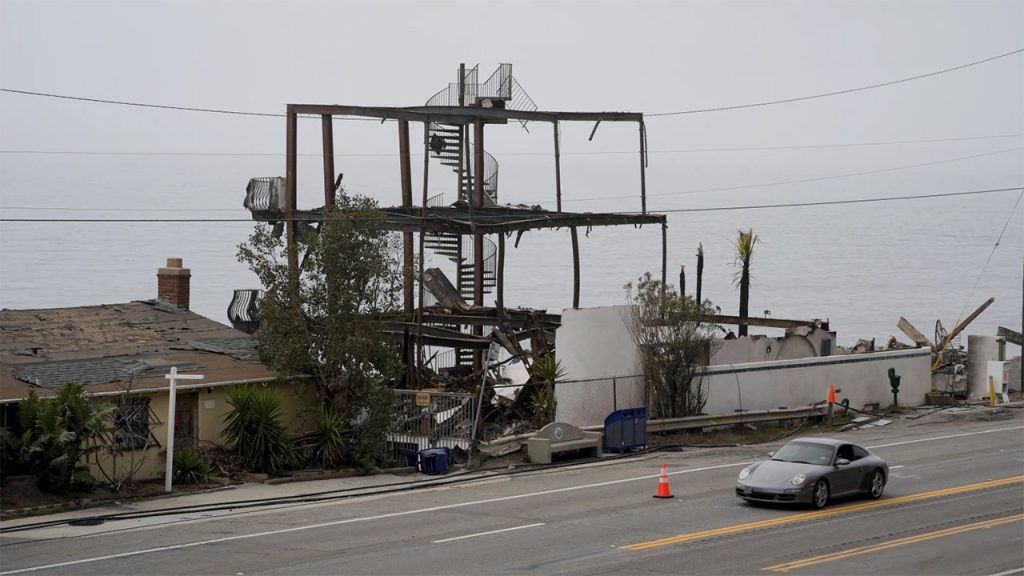The reopening of the Pacific Coast Highway (PCH) in Malibu, California, nearly a month after the devastating Palisades Fire, marks a significant step towards recovery for the affected communities. The fire, ignited by strong winds on January 7th, tore through hillside neighborhoods, leaving a trail of destruction in its wake. Homes, businesses, and other structures were reduced to ashes, and tragically, at least 12 lives were lost. The reopening of this vital artery, which connects coastal communities and serves as a scenic route for locals and tourists alike, signifies a return to some semblance of normalcy, though the scars of the fire remain deeply etched in the landscape and the hearts of those who lost so much.
The reopening of the PCH, however, is not without its limitations and challenges. Initially, only one lane in each direction is open between Santa Monica and the Ventura County Line, with reduced speed limits in effect. Authorities are strongly encouraging essential travel only, recognizing that the area is still in the midst of recovery efforts. Cleanup operations and utility repairs are ongoing, dramatically altering the familiar landscape of the highway. Access to the Palisades burn zone remains restricted, requiring entry passes or proof of residence, a measure implemented to protect residents and their properties while recovery efforts continue. The landscape surrounding the PCH is far from what it once was, a stark reminder of the fire’s destructive power.
The phased reopening of the PCH reflects the complex logistical and safety considerations involved in restoring access to a fire-ravaged area. The northernmost section in Malibu was partially opened on Sunday, but the remaining section in the Pacific Palisades area faced delays due to concerns about public safety and potential looting. Checkpoints remained in place while city officials finalized a plan to ensure security. The responsibility for managing access to the Palisades area has transitioned from the Los Angeles Police Department (LAPD) to the California Highway Patrol and the National Guard, a move intended to free up LAPD resources and allow them to address other pressing needs across the city.
The decision to transfer security responsibilities underscores the strain placed on local law enforcement by the fires and the subsequent recovery efforts. Mayor Karen Bass emphasized the need for adaptability in this dynamic situation, noting that securing the Palisades and alleviating the burden on the LAPD are crucial priorities. The LAPD’s capacity to respond to emergencies citywide had been significantly impacted for nearly a month due to the demands of the fire and its aftermath. This shift in security management allows the LAPD to return to its primary role of serving the wider Los Angeles community.
The reopening of the PCH also comes with a heightened awareness of potential further natural hazards. With rain in the forecast, officials are closely monitoring the highway for possible mudslides and debris flows, recognizing the increased risk posed by the denuded hillsides. The burned vegetation and unstable soil create a dangerous combination, making the area susceptible to landslides and further damage. Constant vigilance and preparedness are crucial to mitigate these risks and ensure the safety of those traveling along the PCH.
The Palisades Fire, however, was not the only fire to wreak havoc in the region. On the same day, another wind-driven fire erupted in Altadena, a community to the west, resulting in even greater devastation. This fire claimed at least 17 lives and destroyed or damaged over 10,000 homes and buildings, surpassing the destruction caused by the Palisades Fire. Both fires were fully contained last week, but the long road to recovery has just begun for the affected communities. The reopening of the PCH is a small but significant step forward, signifying resilience and the determination to rebuild. The scars left by the fires will likely remain for years to come, serving as a reminder of the destructive power of nature and the importance of preparedness and community support in the face of such disasters.

